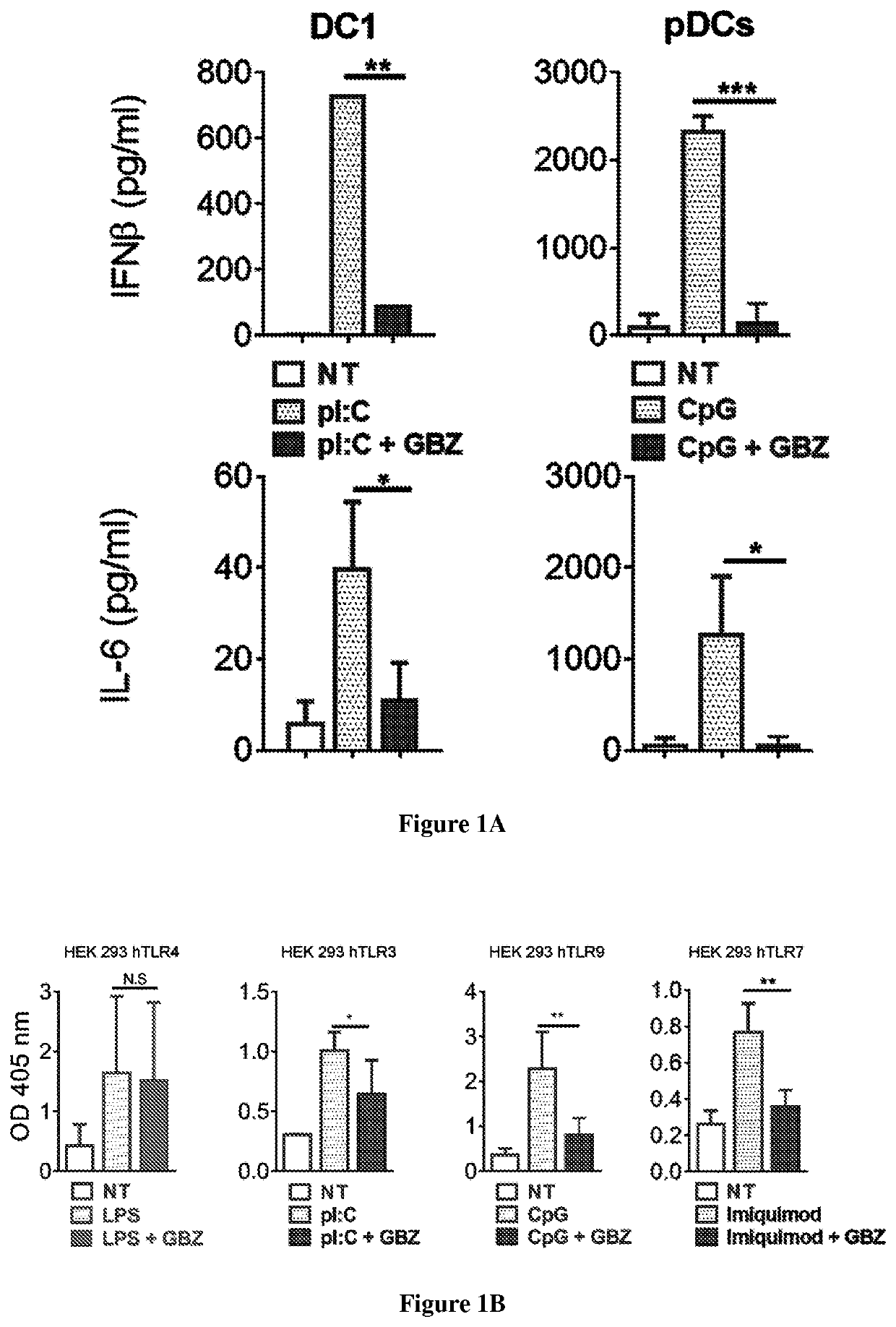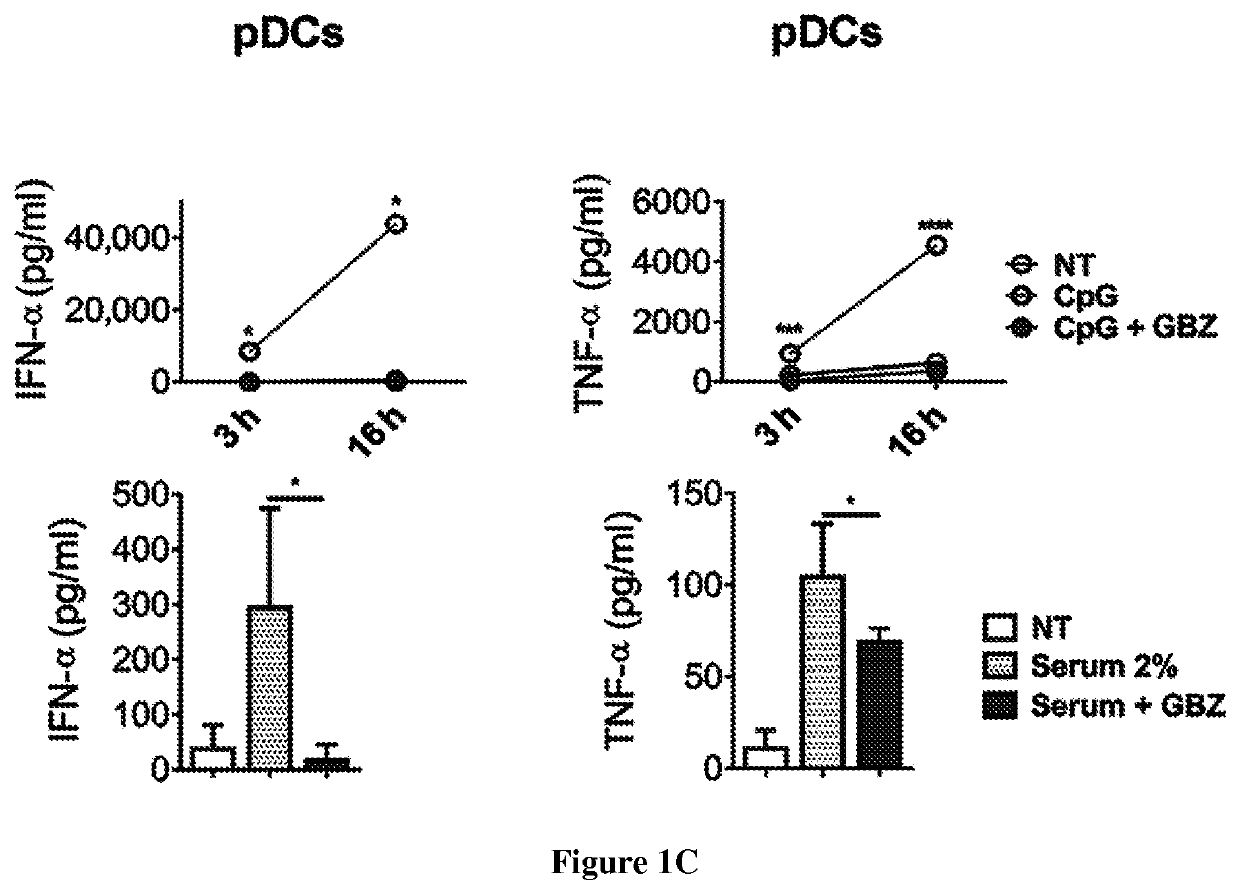Use of guanabenz or derivates thereof for the treatment of type i ifn-dependent pathologies
a type i ifn-dependent pathology and guanabenz technology, applied in the direction of drug compositions, immunological disorders, metabolism disorders, etc., can solve the problems of reduced translation initiation and decreased production of newly synthesized proteins
- Summary
- Abstract
- Description
- Claims
- Application Information
AI Technical Summary
Benefits of technology
Problems solved by technology
Method used
Image
Examples
example
Material & Methods
Cells Culture
[0071]BM-derived DCs were differentiated in vitro from the bone marrow of 6-8 weeks old male mice, using either FLT3 ligand or GM-CSF. Flt3L-DCs were used for experiments between days 6 and 7. Flt3L was produced using B16-Flt3L hybridoma cells. Bone marrow progenitors were plated at 1.5 106 cells / ml, 4 ml / well in 6 well plate, and cultivated with RPMI (GIBCO), 10% FCS (Sigma Aldrich), 100 units / ml penicillin and 100 μg / ml streptomycin (GIBCO), 50 μM b-mercaptoethanol (VWR) and Flt3L. For sorted Flt3L-DCs, cells were gently harvested at day 7 with cold PBS 2% FCS, centrifuged 1200 rpm 5 min at 4° C., counted and stained with for 30 mins at 4° C. Cells were sorted with the FACS ARIASorp. Cells were kept on ice all the time. After sorting, cells were resuspended in supplemented Flt3L-DCs medium at the concentration of 0.2 0.106 cells / well and plated at in a 96 wells plate U bottom. GM-CSF DCs were produced and used for experiments at day 6 of differentiat...
PUM
 Login to View More
Login to View More Abstract
Description
Claims
Application Information
 Login to View More
Login to View More - R&D
- Intellectual Property
- Life Sciences
- Materials
- Tech Scout
- Unparalleled Data Quality
- Higher Quality Content
- 60% Fewer Hallucinations
Browse by: Latest US Patents, China's latest patents, Technical Efficacy Thesaurus, Application Domain, Technology Topic, Popular Technical Reports.
© 2025 PatSnap. All rights reserved.Legal|Privacy policy|Modern Slavery Act Transparency Statement|Sitemap|About US| Contact US: help@patsnap.com



